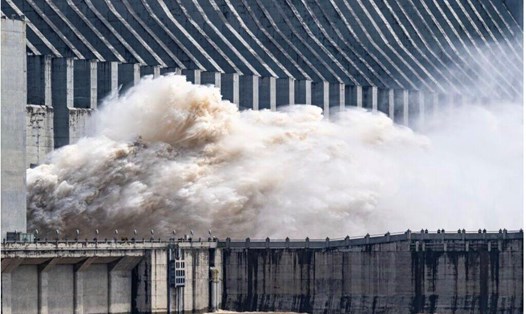The Three Gorges Dam is located in Hubei province, central China. The Three Gorges Dam crosses the longest river in Asia - the Yangtze River. The Three Gorges Dam uses water from three canyons including Cu Duong Hiep, Vu Hiep and Tay Lang Hiep to rotate turbines for power generation.
IFLScience said that the information about the Three Gorges Dam affecting the Earth's rotation seems to have originated from a 2005 post by NASA. This post is about how the catastrophic earthquake and Tsunami in the Indian Ocean affected the Earth's rotation.
The article explains how changes in the distribution of mass on Earth can have a very small impact on the planet's moment of. This is also the phenomenon that explains how a skater can increase the speed of rotation when keeping their arms tightly together.
Similarly, the Earth's motion may be affected after an earthquake due to the shift of tectonic plates. According to NASA scientists, this phenomenon occurred in 2004 after the Indian Ocean earthquake. This earthquake shook the planet's seismic structure, changing the distribution of mass and reducing the length of a day by 2.68 microseconds.
In theory, large displacements of water on Earth could have similar effects. In a 2005 post, Dr. Benjamin Fong Chao, a geophysicist at NASA's Goddard Space Flight Center, explained that the massive Three Gorges Dam could hold 40 cubic kilometers (10 trillion gallons) of water.
According to his calculations, the amount of water in China's hydroelectric dam may shift by 0.06 microseconds, increasing the length of a day on Earth and moving to the Earth's poles by about 2cm. IFLScience points out that this number is not large compared to the impact of earthquakes, but it is quite significant when considering that the Three Gorges Dam is a man-made structure.
In fact, humans are also affecting the Earth's rotation in many different ways. Climate change is leading to a redistribution of the Earth's mass. As temperatures rise, ice coves at both ends of the Earth melt and tropical depression levels rise, causing more mass to be concentrated in the equator than at both poles. As a result, the Earth's rotation slows down and the days get slightly longer.
These fluctuations are not noticeable in daily life on Earth but can be confused with ultra-precision timing devices such as nuclear watches. The problem that arose afterwards has led some scientists to argue that the world will need to take into account a negative leap second (ie a second subtracted to synchronize with the Earth's motion, which also means a minute will only have 59 seconds) in the next decade.










